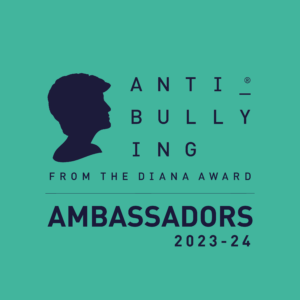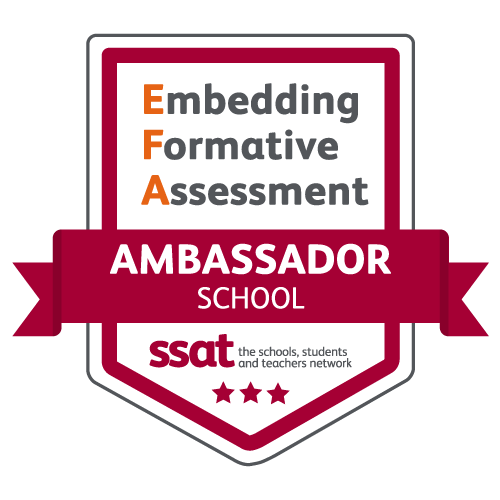Curriculum
The Dance Department at Shireland makes dance accessible to all
Offering students technical training in a wide range of styles, whilst also providing students with the space and support to express themselves individually. Many of our students have gone on to study dance in further education and gain careers in this field.
Dance is taught in our beautiful dance studio, complete with mirrors, sprung floor, ballet barres and sound system, and performances take place in our state-of-the-art Theatre. Our links with Birmingham Hippodrome Education Network enable us to offer incredible performance opportunities, both within the Academy and the local community, as well as regular contact with professionals currently working within the Creative Arts industries.
Dance enables students to develop transferable skills such as confidence, self-esteem, communication, time management and problem-solving, as well as the technical skills required to be successful in Dance.
WHAT IS COVERED IN
In Year 7 students explore two units of work before rotating to another area in PE:
Unit 1: An Introduction to Dance at SCA
Students explore safe working practices, including the importance of warmups and cool downs.
Unit 2: Chance Dance
A unit of study in which students are introduced to the 6 Dance Actions, using these to choreograph and perform sequences.
In Year 8 students explore two units of work before rotating to another area in PE:
Unit 1: Dance Around the World
A scheme of work that explores a variety of cultures and styles, including Capoeira, Bhangra, Ballet, and the New Zealand Haka.
Unit 2: Dance Technique
Students create their own performances using choreographic tools to expand their choreography knowledge from Year 7 by using features such as action, space and dynamics.
In Year 9 students move on to explore professional works and their practitioners, building on their prior knowledge of practical and academic skills within Dance. Students explore the choreographic process in further detail appreciating, reflecting and analysing the professional works studied.
Unit 1: Mad Hatters Tea Party-
Students explore the work of choreographer Kate Prince and her professional Dance company ZooNation. This unit explores the topic of Mental Health, underpinning work covered in Personal Development sessions.
Unit 2: Introduction to Hip- Hop
Students continue to expand their knowledge of styles from Year 8, exploring Hip-Hop culture. They study the professional work of Emancipation of Expressionism by Kenrick Sandy and his company Boy Blue Entertainment.
To build on students’ confidence and self-awareness they are encouraged to perform to a live audience or to their peers.
At KS4 we deliver the AQA GCSE Dance Specification. This qualification involves the following components;
- a) Dance Performance -Internally controlled assessed externally
Solo and Duo / Trio 30%
- b) Dance Choreography -Internally controlled assessed externally
Solo or Group 30%
- c) Dance Appreciation- External Exam
Written Exam 1. 5 Hours. The written assessment is clear, well-structured and easy for students to understand. Question styles include multiple-choice, short and extended answers.
The GCSE Dance specification recognises the role of dance in young people’s lives and students will study a range of dance styles and style fusions. Apart from the solo performance, they can choose any style in which to perform and choreograph, providing it meets the assessment criteria. The study of the anthology of professional works will develop their ability to critically appraise professional dance works and provide a springboard for engaging in practical tasks.
At Shireland we have bridged the gap between GCSE and A-level Dance, giving your students the skills and experience to better prepare them for the demands of AS and A-level if they choose to progress with their study.
At KS4 we deliver the AQA GCSE Dance Specification. This qualification involves the following components;
- a) Dance Performance -Internally controlled assessed externally
Solo and Duo / Trio 30%
- b) Dance Choreography -Internally controlled assessed externally
Solo or Group 30%
- c) Dance Appreciation- External Exam
Written Exam 1. 5 Hours. The written assessment is clear, well-structured and easy for students to understand. Question styles include multiple-choice, short and extended answers.
The GCSE Dance specification recognises the role of dance in young people’s lives and students will study a range of dance styles and style fusions. Apart from the solo performance, they can choose any style in which to perform and choreograph, providing it meets the assessment criteria. The study of the anthology of professional works will develop their ability to critically appraise professional dance works and provide a springboard for engaging in practical tasks.
At Shireland we have bridged the gap between GCSE and A-level Dance, giving your students the skills and experience to better prepare them for the demands of AS and A-level if they choose to progress with their study.
KS4 COURSE
WHAT CAN THE SUBJECT LEAD TO?
Studying Dance can lead directly to a career as a dancer or choreographer. It can also lead to the study of a Level 3 Performing Arts course. It is important to remember that the study of Dance also develops several key interpersonal skills that are applicable to any career, such as communication, confidence, creativity and presentation skills.
HOW WILL I BE ASSESSED?
60% internally controlled assessment. 40% external examination.
WHAT SKILLS ARE REQUIRED?
Students who choose to study Dance will have shown some aptitude for the subject in Key Stage 3. Students will need to perform to a live audience on several occasions throughout the course, so must enjoy performing. All students must have good standards of literacy.
ADDITIONAL INFORMATION
Shireland Collegiate Academy has a partnership with Hippodrome Education Network. This partnership enables us to offer professional experiences to the students, with performance opportunities and regular contact with professional performing artists. There are several opportunities to watch live professional performances at the theatre.









